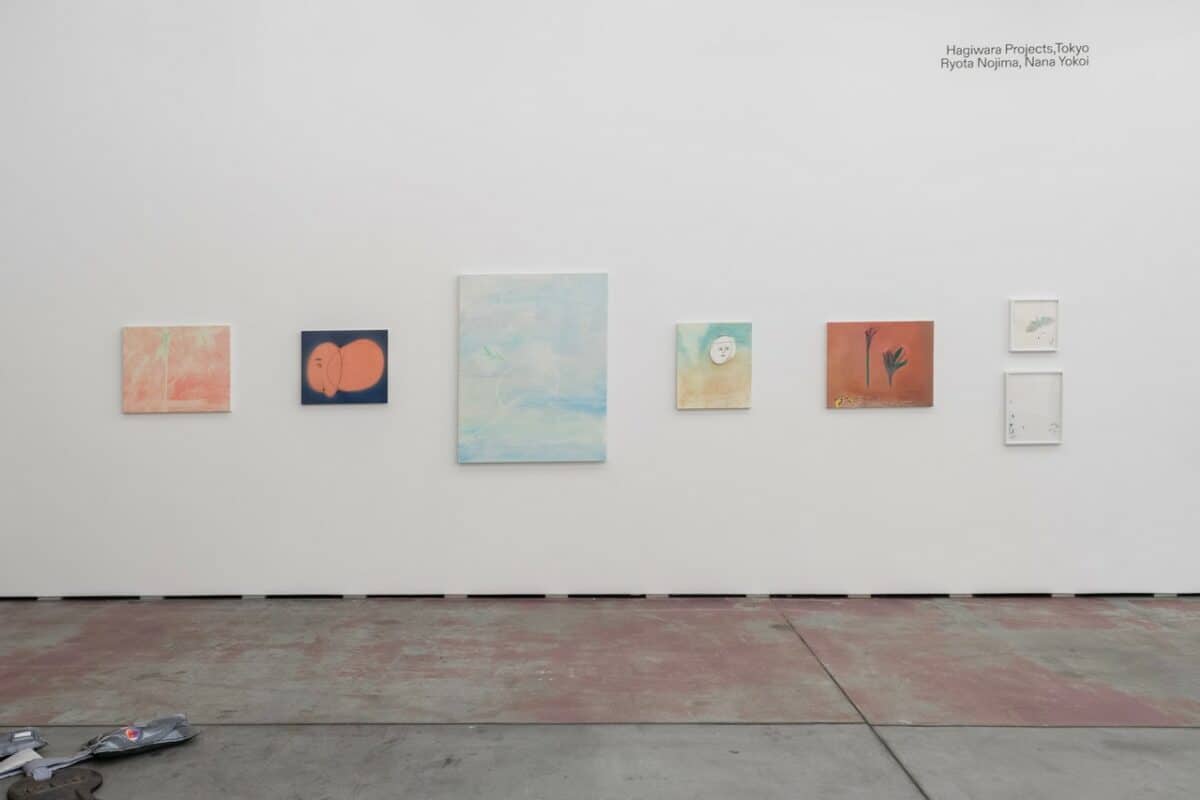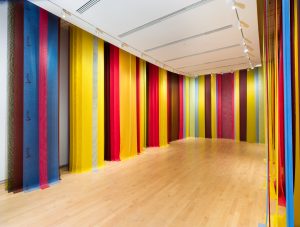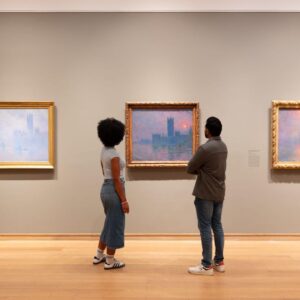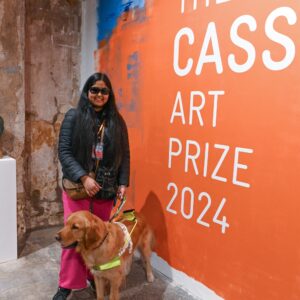It is hot. Things are heating up. Steaming. Basel Art Week marks the start of high summer; a time of feverish travel, effervescent convenings and long languid nights.
A short walk from the hothouse of the main Art Basel fair, June Art Fair has an abundant feel—more bubbly red than white wine on ice. Situated adjacent to the Landhof community garden, the gallery-led art fair and ‘exhibition platform’ features twenty-two galleries and projects (with over 50 artistic contributions). Here are five hot things that caught my eye (in booth order).
Lina Viste Grønli, at Christian Andersen, Copenhagen. Booth 1

‘scrutiny’, ‘reason’, ‘critique’, ‘review,’ singular words gesturally whittled from ash or pine, from maple or oak; the wooden reliefs that constitute the majority of Lina Viste Grønli’s solo presentation unpick the fixity of language. A continuation of Grønli’s interest in ‘thinging’—a concept borrowed from Martin Heidegger, where objective identification becomes something more animate and descriptive—these tongue-in-cheek carvings not only free these words from their critical and often overly theoretical associations but make them act in a verby manner; one where philosophical grains bend and blend and overflow any fixed stasis. In turn, Grønli’s works here highlight the multiple semiotic layers that run through words, and linguistics more broadly, blurring the boundaries between an object and its many meanings. christianandersen.net/
Abbas Zahedi, Belmacz, London. Booth 10*

The booth is super light. Composed from four small light boxes—customised exit signs—an even smaller shelf holding an aluminium cast of a Tippex bottle and a stack of artist publications, Belmacz’s presentation is wholly unostentatious; generous in a quiet way. Abbas Zahedi’s first presentation in Switzerland, the booth provides a material insight into how the artist’s often site-sensitive practice speaks all poetically, transcending borders—be these the thresholds of a place or of bodies. Initially created for Zahedi’s first solo exhibition at South London Gallery (2020), the four customised signs on display each depict part of a bodybuilder. Flexing in green light, the signs conflate the universal iconography for exiting—the exit sign—with something more personal; an individual’s search to exit their situation through bodily optimisation. And in this way, the signs subtly highlight the processes adopted—or imposed upon—certain individuals in order to arrive at a place of safety. belmacz.com
Ryota Nojima, at Hagiwara Projects, Tokyo. Booth 11

Painterly dreams; Ryota Nojima’s oil paintings are lively renditions that represent his diverse thoughts and sensibilities; to me, something of the felt dreamings experienced in day to day life. Working intuitively, with and as paint is applied to canvas, Nojima’s works are ambiguous, without a fixed purpose, with no definitive subject intended. And in this way, they encourage a viewer’s presence. For example, on first appearance paintings such as Resort 8 (2020) look to me like simple sea skyscapes, painted vertically as to echo traditional Japanese prints. With its white brush lines, that loop as scribbles across the painting’s surface, the work not only reminds me of gentleness and breeze I associate with bright spring days but brings to mind something of the escapist fantasies that I experience when looking at sunkissed seas through the thumb smudged, scratch screen of my iPhone. hagiwaraprojects.com
Germain Ngoma and Chloe Elgie, at Centralbanken, Oslo. Booth 14

THE PENITENTIARY REVIEW is the title given to Centralbanken’s large group presentation. Each of the works presented has an archival feel, echoing the history of Centralbanken’s Oslo gallery space; a space that was once a pawnbroker and loan business bank. Browsing the dense hang, two artworks twinkled before my eye: Germain Ngoma’s The Licking Sticks #8 (2014) and Chloe Elgie’s Two Notable Gargoyles (2022). The Licking Sticks #8 is an iron and bronze form. With its long steam handle and bulbous bronze base the sculpture recalls both a growing sapling and a shovel. To me this dule connotation alludes to processes of becoming; that is how a thing’s being is informed by the tools used to nurture their growth.Two Notable Gargoyles is a pair of wooden pipes abstracted from an old church organ. Hung high, facing each other, here they linge casing a silent eye over the booth, almost hunting the space with an elegiac echo. Both Ngoma and Elgie’s works draw on contextual histories, translating these into poetic sculptural gestures that appear to reveal the particularities of a space or situation. santolarosa.no
PROVENCE Ad Free, via PROVENCE, Zurich. Booth 18

A fly presentation. Posters dotted, high low and a-flutter as a writerly mass of pages all messed up by a gust of wind. This evocatively urban installation of text-based posters tells something of the history of PROVENCE—the Zurich-based, trans-European lifestyle brand, publishing house and agency for contemporary art. Amongst this re-jumbled chronology, here PROVENCE present their recent project PROVENCE Ad Free. Rhythicaly clacking and crackling, the project is composed from an 80 slide Kodak film carousel. Each of the stills projected features either an informative slogan or a washed-out editorial image reaped from a 2009 issue of Vogue Italia. In spite of their degraded apparition, these editorial pages ooze desire, a feeling exacerbated as the carousel clicks around and the skins of these projected images flick and fade. As a brand/publishing house/agency, a sense of desire seems to suffuse PROVENCE’s work. Unlike the didact imperatives of magazines such as Vogue, the want and impulses at the heart of PROVENCE’s output feels wholly more anomalous. Seen through their degraded urban-esque archive of art-writing posters, desire here functions as a creative tool to think beyond the expected standards of the advertised norm. provence.st
June Art Fair, June 12th–18th, 2023, Riehenstrasse 90B, 4058 Basel, Switzerland
*as a note, Abbas Zahedi and I are long-term collaborators and friends. His inclusion in this list is not a nepotistic act.







